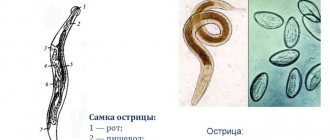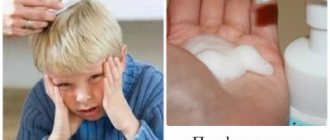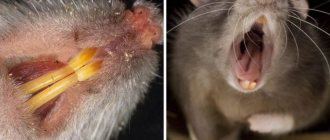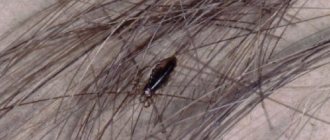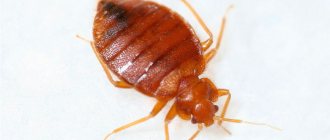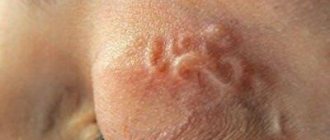What parasites can harm human health?
Some parasites in herring are able to survive in the aggressive environment of the human stomach and intestines. They perfectly adapt to the conditions of the gastrointestinal tract, reproduce there and cause irreparable harm to the health of their new “owner”.
The most dangerous types of helminthiasis transmitted through the consumption of lightly salted herring:
- Opisthorchiasis;
- Diphyllobothriasis;
- Anisakidosis.
Opisthorchiasis. This type of helminthiasis is caused by the cat fluke. Its carriers are mammals that consume live fish. If poorly processed fish ends up in human food, then he too becomes a target for opisthorchiasis. Fish is an intermediate host of the cat fluke and a carrier of the disease. The consequences of opisthorchiasis are damage to the digestive organs, liver, gall bladder and bile ducts.
Diphyllobothriasis. This type of parasitic infestation causes a wide tapeworm, reaching a length of 25 m. Diphyllobothriasis provokes the following symptoms: anemia, abdominal pain, nausea and weakness, sudden weight loss, loss of appetite.
Anisakidosis. The disease is caused by anisakids - roundworms similar in appearance to roundworms. Parasites actively feed in the human stomach and intestines, violating the integrity of the mucous membrane. This is accompanied by symptoms similar to those of appendicitis: nausea and vomiting, diarrhea, fever. Massive anisakid infestation can be fatal.
A little about the disease
The causative agent of the disease is the larvae of Anisakidae.
Externally, the worms resemble roundworms, the only difference is in size: females reach a length of 6 cm, males - 1 cm. The anisakids body has the shape of a spindle of a pale yellow color. Anisacidosis is dangerous for humans due to serious complications. Therefore, everyone needs to know what this is, since infection with this type of helminthiasis is not uncommon.
A number of literary sources claim that the almost overwhelming number of marine fish are infected with anisakidosis: most often, the invasion is found in herring (100%), hake (50%), cod (25%), pollock (35%) and their other counterparts.
Parasites are characterized by increased resistance to the external environment. To neutralize and destroy them, it is necessary to freeze the fish at –18°C for 2 weeks, and at –40°C for 40 minutes. Parasites can withstand temperatures up to 45°C. Their death occurs only at 60°C for a quarter of an hour. That is, insufficient heat treatment of seafood does not guarantee their disinfection.
Having heard such words, many people believe that it is easier to give up herring or hake than to risk their health in the future. But there is no need to do this - both river and sea fish are good for humans. The main thing is to pay more attention to prevention.
How can you tell if there are parasites in herring?
To avoid purchasing herring with parasites, you should take precautions. Care when choosing fresh or lightly salted fish will help avoid infection with helminths. But sometimes parasites are detected already during cutting and preparation.
Signs of the presence of parasites in herring:
- A dent after pressing with a finger that remains on the carcass for a long time;
- Cloudy eyes with a gray tint;
- Unnaturally swollen abdomen;
- Unpleasant odor and dark color of gills;
- When cleaning the fish, it is noticeable that the insides have a repulsive sulfuric, putrid odor;
- Broth made from poor-quality fish does not have a characteristic greasy film; instead, white flakes of foam from coagulated protein appear on the surface.
In large retail outlets or in specialized stores selling fish, all products undergo sanitary control. These precautions are a reliable insurance against purchasing fish infected with parasites.
Signs of the presence of worms in fish
If the product is well salted, the likelihood of the presence of helminths is minimal. Fresh and lightly salted fish should be examined more carefully. The presence of worms is confirmed by a number of signs:
- The outer coverings lose their elasticity. When pressed, a dent is formed, which in sick fish is not restored.
- The shade of the eyes changes: the sclera becomes cloudy and changes color.
- The abdomen increases in size, which is facilitated by irreversible processes in the internal organs and the growing number of helminths.
- When cutting the carcass, you may notice that the gills have changed color. In addition, an unpleasant odor appears.
- The scales come off easily, and the outer covers are covered with mucus.
- When the abdominal cavity is opened, a putrid odor emerges from it.
- When cooking, the broth becomes filled with flakes. It also turns out to be non-greasy.
With severe infection, the worm is visible directly on the surface of the abdominal organs. In such cases, it is possible to determine the invasion by external signs, since destructive processes occur quickly.
What do the helminths contained in herring look like?
Worms can have different lengths and body structures, which are determined by their belonging to a particular species. For example, Anisakids are similar in appearance to roundworms: a spindle-shaped body, up to 60 mm long, rounded ends. The cat fluke, like all flukes, is characterized by a flattened body. Dimensions of the parasite: up to 30 mm length and 15 mm width.
Having cut the carcass, you may see small worms located next to the caviar or milk
Less common in fish is wide tapeworm. This is a large tape parasite, the length of which reaches several meters. A common species is ligula. The length of this parasite is within 1 m. Not all helminths are noticeable when examining a fish product. Some may exist in internal organs and are detected only by changes in tissue structure.
What do parasites look like in herring?
You can see parasites in herring with the naked eye. Their main habitat is near milk or caviar.
The appearance of anisakidae, one of the parasites in herring, resembles an roundworm. These are spindle-shaped roundworms 5-6 cm long. There are 3 lips on one of the rounded ends of the anisakids. The larvae of this parasite are extremely dangerous for humans.
In the cat fluke, which provokes the development of opisthorchiasis, the size of the flattened body does not exceed 3 cm, and its thickness is 1.5 cm. They enter the human body in the form of larvae, indistinguishable to the ordinary eye.
Heat treatment of the fish would certainly destroy these parasites in the herring, since cooking at high temperatures (100°C) completely destroys the viability of the helminths. However, salted or smoked herring is not exposed to high temperatures, maintaining the risk of infection.
Saline solution does not always destroy larvae and mature individuals. In some cases, this measure even makes the parasites more viable. The smoking point is so low that it cannot guarantee safety. On the contrary, increased temperature during smoking is an additional factor for the favorable development of parasites in herring.
What is anisacidosis and is it dangerous for humans?
Anisakidosis is a parasitic disease caused by the parasitic development of a worm called anisakid in the human body. Humans are the definitive host for these worms. First, they enter the body of crayfish and other small babies. In turn, they are eaten by fish and thus the anisakid migrates to a new, larger host. Ultimately, a person eats the fish and becomes infected with a parasite, which fully develops in his body, reaching a size of up to 4 cm.
Anisakids develop while in a capsule, where they curl up and form a ball. When cutting fish, they are sometimes difficult to detect when the parasites have not yet reached a significant length. Almost all herring are infected with anisacids.
Such a scale of infection cannot be controlled in any way, so infected herring is considered the norm. The main emphasis is on destroying parasites in fish before they are eaten by humans.
When infected, the parasite establishes itself and develops comfortably in the gastrointestinal tract. It can settle in the stomach, liver, pancreas, and intestines. Also, the larva of a herring worm can settle in the esophagus and even in the throat, that is, in any location along the way from the mouth to the colon.
When a larva invades, the body begins to react with local inflammation. The blood changes its chemical composition due to the production of increased numbers of eosonophils, blood cells that react to allergens. The immune system tries to fight the invasion, but to no avail.
Anisakids do not respond to the resources of the human body, being neither viruses nor bacteria. They cling to the organ, grow there, feeding on useful substances, and cause many diseases, depending on the location.
Consequences of parasitic influence of anisakid:
- if the stomach is damaged - gastritis, ulcer;
- with damage to the liver and gallbladder - hepatitis, obstruction of the bile ducts, cirrhosis, cholecystitis;
- if the pancreas is damaged - pancreatitis;
- with intestinal damage - peritonitis, necrosis, intestinal obstruction.
The parasite does not live indefinitely in the human body. Its lifespan is short and amounts to 2-3 months. They do not hatch new larvae due to the fact that they do not survive to reproductive age. However, during these months they manage to cause serious damage to the health of their owner. And even after the death of an anisakid, a person will feel the symptoms of concomitant diseases for a very long time, sometimes for years.
How to protect yourself from infection?
To avoid getting parasites in herring, you should follow simple rules when purchasing:
- Avoid buying gutted herring, since it is much easier to detect parasites when cutting fish than in preserves and semi-finished products;
- You need to buy fish only in specialized retail outlets, departments of large supermarkets;
- Fresh fish is stored in the freezer compartment of the refrigerator at a temperature not exceeding -20°C;
- Holding fish for 10 minutes at a temperature of -30°C will completely protect it from parasites;
- Fry the fish for at least 20 minutes, cutting the carcass along the ridge;
- Cooking of fish is carried out for at least 20 minutes from the moment the water boils;
- Cooking fish pies in the oven should not take less than half an hour.
Diphyllobothriasis
The causative agent of diphyllobothriasis is an intestinal parasite from the class of tapeworms. Its length can reach 24 m. Common symptoms that occur with diphyllobothriasis include abdominal pain, poor appetite, nausea, vomiting, and sudden weight loss. As a result of the disease, anemia develops in most cases.
Diphyllobothriasis develops anemia
Is it possible to eat herring infected with parasites?
Of the 300 species of parasites found in fish, only a few varieties are dangerous to humans. This danger persists only if fish dishes are improperly stored and prepared. Freezing freshly caught herring at very low temperatures will kill the parasites in the fish's intestines, preventing them from getting into the muscle tissue. After removing the caviar, milt and intestines of the herring, it can be easily eaten.
Having discovered parasites in the intestines of herring, you need to make sure that they are not viable. Dead individuals are not dangerous; they only harm the aesthetic feelings of consumers.
Life cycle of a parasite
The definitive hosts of helminths are marine mammals, fish and birds that feed on them. In their digestive tract, anisakids reach maturity and multiply intensively. Helminth eggs fall into the water, where larvae hatch from them.
The latter are swallowed by intermediate hosts - crustaceans: for example, plankton. The larvae are fixed in them in the form of specific cysts.
Other larger mammals or fish become infected with anisakids by eating plankton. The life cycle of helminths repeats itself.
A person is an additional host of parasites, since in his body the worms do not reach sexual maturity, remaining in the larval stage. As a result, a dead-end branch of anisakid development arises.
What to do in case of infection?
A parasitologist or infectious disease specialist treats patients infected with parasites. The incubation period for anisakidosis is 10-14 days. To clarify the diagnosis, differential diagnosis of diseases with similar symptoms is carried out. During laboratory testing, parasite larvae are found in feces and vomit.
The patient undergoes an FGDS - examination of the digestive system using a gastroscope. As a result of this study, mucosal erosions and helminth larvae can be detected in the stomach and duodenum. When collecting anamnesis, the doctor clarifies whether the patient has consumed fish that has not been thermally processed.
Treatment of parasites can be either surgical or medicinal. Anthelmintic drugs – Mebendazole, Albendazole. In case of complex forms of helminthiasis, the patient is monitored at the dispensary for a year and undergoes regular fibrogastroduodenoscopy (FGDS).
Author of the article:
Danilova Tatyana Vyacheslavovna |
Infectious disease specialist Education: in 2008, received a diploma in the specialty “General Medicine (Therapeutic and Preventive Care)” at the Russian Research Medical University named after N. I. Pirogov. I immediately completed an internship and received a diploma as a therapist. Our authors
Treatment
Anisacidosis can be treated conservatively and surgically. Depending on the severity of the pathological process, an individual course of therapy is selected.
In most cases, timely consultation with a doctor allows you to avoid surgical intervention in the body. Medicines prescribed for deworming have a wide spectrum of action. The following table describes the standard course of conservative treatment for a patient with anisakidosis.
| Complex of medicines | Recommended drugs |
| ANTIHELMINTHIC | Mebendazole and Vermox - inhibits protein synthesis in the tissues of parasites, destroys adults and their larvae. The course is several days in an individual dosage. Therapy with Vermox is most suitable for children and adults due to the less toxicity of the drug. Albendazole and Tianbendazole are also highly effective against anisakides. The course is from 7 to 21 days, depending on the degree of invasion, at a dosage of 400 mg per day. |
| ANTACID | Rennie, Almagel, Gaviscon - eliminate the pathological symptoms of the disease. |
| ANSPASMOLYTIC | No-spa and Papaverine help relieve pain and spasms. |
| GLUCOCORTICOSTEROIDS | Dexamethasone and Prednisolone quickly eliminate inflammatory processes in the body, helping to combat the consequences of helminthiasis. |
| ANTIHISTAMINES | Suprastin and Cetrin fight allergy symptoms on the skin. |
Conservative treatment of anisakidosis in humans is not without its drawbacks. First of all, this is the lack of exact dosages for certain groups of patients. Secondly, there is no clearly selected therapeutic regimen that allows it to be prescribed to all patients without exception in short courses. And thirdly, the need to constantly monitor the results of treatment using laboratory diagnostics.
If serious complications occur, the parasites are surgically removed from the patient's body. An endoscope is used for this purpose. The operation is quite painstaking, since the larva that has penetrated into the tissue of the stomach or intestines must be completely removed.
Even the remaining minimal piece of the parasite can subsequently lead to the formation of a granuloma.
That is why, after successful surgical treatment, patients are observed at the dispensary for another year, and every 3 months they undergo fibrogastroduodenoscopy.
Opisthorchiasis
What other worms in herring are dangerous to human health and life? Is it possible to eat such a low-quality product?
If any parasites are found, the fish in which they are found should be disposed of immediately. This is due to the fact that such a product can contain a helminth - the cat fluke, which leads to the development of opisthorchiasis. Carnivores are usually the carriers of this parasite. But in some cases they can also settle in fish.
The helminths in question affect the bile ducts and bladder, as well as the liver, into which they enter through the duodenum.
How to treat: medications and traditional methods
Treatment methods for anisacidosis are selected based on the location of the parasite, the severity of symptoms, the degree of damage to the body, and allergic reactions. The therapy can use both medications with antiparasitic effects and surgical intervention in severe cases of the patient. The use of traditional methods of treatment as an additional effect on the body can significantly help the patient.
Surgery
Surgery is performed only when anisakidosis causes acute symptoms and complications. Acute pain, fever and nausea may indicate serious complications. The instrument used to remove the anisakid is an endoscope. Extraction occurs from the intestines, stomach or esophagus.
Even after conservative removal of the worm, monitoring of the body's condition for 1 year using endoscopy is required.
Drug therapy
If the condition does not require surgical measures, then anisakidosis can be cured with the help of antiparasitic medications. Usually prescribed:
It is important to follow your doctor's recommendations when taking these medications. The course of therapy is short-term, but the effect is usually positive.
If the parasite in the body provokes allergic reactions, then the patient needs to take antihistamines:
- in case of anaphylactic shock, be sure to call an ambulance;
- for Quincke's edema - ambulance;
- for asthma - salbutamol to relieve an attack and ketatifen with a prolonged cumulative effect;
- for skin reactions - antihistamines such as suprastin or other new generation drugs.
Do Antihelminth Forte drops help against parasites, or is it a scam?
How the drug Paptlock Plus helps fight papillomas, read more here.
Traditional medicine
If a living anisakid has already entered the human body and is firmly established there, treating it with folk remedies alone is ineffective. Traditional methods are effective as adjuvant therapy. Also, for prevention, folk remedies can prevent the development of anisakid.
List of remedies for treating anisacidosis at home:
- Hot red pepper . It can be added to food, preferably fresh. Those diagnosed with gastritis, colitis and ulcers should not eat.
- Ginger root. It is a natural remedy against parasites and many pathogenic bacteria. It can be consumed both dried and fresh. Contraindicated for peptic ulcers of the digestive system.
- Chopped black pepper
- Mustard seeds. Contraindicated for children, people with gastrointestinal diseases in the acute phase, strokes, bleeding, and allergy sufferers.
- Infusion of bitter wormwood .
- Tansy infusion .
- Infusion from walnut .
All of the above remedies must be taken in moderation. Despite their natural origin, excessive use of traditional medicine can lead to complications of existing diseases and allergic reactions. Herbal infusions are always used according to the instructions.
About anisakidosis in the video:
Bibliography
- Centers for Disease Control and Prevention. Brucellosis. Parasites. Link
- Corbel MJ Parasitic diseases // World Health Organization. Link
- Young EJ Best matches for intestinal parasites // Clinical Infectious Diseases. — 1995. Vol. 21. - P. 283-290. Link
- Yushchuk N.D., Vengerov Yu.A. Infectious diseases: textbook. — 2nd edition. - M.: Medicine, 2003. - 544 p.
- Prevalence of parasitic diseases among the population, 2009 / Kokolova L. M., Reshetnikov A. D., Platonov T. A., Verkhovtseva L. A.
- Helminths of domestic carnivores of the Voronezh region, 2011 / Nikulin P. I., Romashov B. V.
An article for patients with a doctor-diagnosed disease. Does not replace a doctor's appointment and cannot be used for self-diagnosis.
The best stories from our readers
Topic: Parasites are to blame for all troubles!
From: Lyudmila S. ()
To: Administration Noparasites.ru
Not long ago my health condition worsened. I began to feel constant fatigue, headaches, laziness and some kind of endless apathy appeared. Problems also appeared with the gastrointestinal tract: bloating, diarrhea, pain and bad breath.
I thought it was because of the hard work and hoped that it would go away on its own. But every day I felt worse. The doctors couldn’t really say anything either. Everything seems to be normal, but I feel like my body is not healthy.
I decided to go to a private clinic. Here I was advised, in addition to general tests, to get tested for parasites. So in one of the tests they found parasites in me. According to doctors, these were worms, which 90% of people have and almost everyone is infected, to a greater or lesser extent.
I was prescribed a course of antiparasitic medications. But it didn’t give me any results. A week later, a friend sent me a link to an article where some parasitologist shared real tips on fighting parasites. This article literally saved my life. I followed all the advice that was there and after a couple of days I felt much better!
Digestion improved, headaches went away and the vital energy that I so lacked appeared. To be sure, I took the tests again and no parasites were found!
Anyone who wants to cleanse their body of parasites, no matter what types of these creatures live in you, read this article, I’m 100% sure it will help you! Go to article>>>
Still have questions? Ask them in our Anonymous group on VK
How to get rid of parasites in a week. The answer is here!
A reliable and effective remedy for combating worms. Removes all parasites in 21 days.
Go to website
Reviews
Read online
Symptoms that 100% indicate parasites! Take the Test.
How to rid your body of life-threatening parasites before it’s too late!
Read more
Website
To get a consultation
The doctor tells how to quickly get rid of parasites for adults and children!
A parasitologist explains what effective methods exist to combat helminths.
More details
Read completely
Comments
Search for cures for parasites
This service is a small help in finding cures for parasites. To start using it, select the type of parasite. If you don’t know what kind of parasite you are infected with, this parasite identification tool will help you by symptoms.
We recommend reading
Actinomycosis - causative agent, origin, symptoms, classification, diagnosis and treatment
13 hours ago 03.03.202103.03.2021ecoliv94
Broomrape is a plant parasite: how it parasitizes and how to fight it
01/27/202102/02/2021ecoliv94
What parasitic bacteria cause tuberculosis in humans?
01/27/202102/02/2021ecoliv94
Life cycles of human and animal parasites: types and classification
01/27/202102/3/2021ecoliv94
Parasites that cause helminthiasis
What to do if there are worms in the herring? Are such parasites dangerous for humans? Only experienced specialists can answer these questions.
If such a problem has happened to you, we recommend that you contact not only Rospotrebnadzor, but also a doctor.
According to the latter, most of the helminths found in fish products do not take root in the human body. But among them there are also those that tolerate stomach acid quite calmly, after which they penetrate the intestines, as well as other organs of the digestive system. Such parasites include the following: anisakids, cat fluke and broad tapeworm. We will tell you right now about the harm caused by such worms found in salted herring.
Nematodes
These parasites are widespread and numerous - almost 20 thousand species of nematodes that parasitize vertebrates are known. Many representatives of this class also parasitize invertebrate animals and plants (for example, farmers know nematodes from beets or wheat) or lead a “free lifestyle”.
Can nematodes infect humans? Yes - relatively common parasites of this group are represented by pinworms and roundworms, which parasitize the human small intestine.
Another dangerous parasite is Trichinella, which attacks the host's muscle tissue and causes a disease called trichinosis. This is a serious disease that can affect the body if you eat raw or improperly cooked meat from contaminated fish (sometimes even pork).
It has two phases - intestinal and muscular. During the intestinal phase, abdominal or joint pain and fever occur, and the muscular phase is characterized by severe, cutting pain in the muscles. The disease at this stage ends in death in a quarter of all cases.
Does salt kill parasites?
Salt destroys helminths and their larvae, but it is necessary to strictly adhere to a certain salting scheme.
The table shows the criteria for salting fish, leading to the death of helminths and their larvae.
| Salting conditions | Solution temperature | Days after which the larvae die |
| Hot Ambassador | 15 – 16°С | 9 |
| Cold Ambassador | 5 – 6°С | 13 |
| Dry salting | 13 | |
| The fish is gutted | 12 | |
| Whole fish | 13 |
Salt should make up at least 20% of the weight of the fish!
After keeping the fish in this solution, it must be soaked. Rinse under water and place in a container with water. Leave for a couple of days. Excess salt will be released and the fish is ready to eat.
Precautions to avoid infection
Some types of parasites do not die when salted, so it is recommended to avoid lightly salted fish. If you buy the carcass as a whole, you can independently assess its condition. It is recommended to purchase fish products from reliable suppliers. You should not give in to the temptation and purchase discounted fish or discounted goods.
A freezer is used for storage; it is desirable that the temperature is at least -20 degrees. The lower the value of this parameter, the less it is necessary to keep the fish in the cold. For example, at -30 degrees, only a 10-minute treatment is sufficient. The cooking process should be long (at least 20 minutes from the moment the water boils).
Do you eat fish infected with worms?
The answer to the question whether it is possible to eat purchased herring that has helminths in it depends on the storage conditions. There is little or no risk of infection if freshly caught fish are immediately placed in the freezer for a long period of time. In this case, the helminths die while in the intestines, without having time to spread throughout the body. During cutting, internal organs with parasites are removed, which means the fish can be eaten.
If you freeze immediately, the parasites will die in the intestines without having time to move into the muscle tissue
What if a worm infection occurs?
It is not always possible to notice parasites, especially if the spoiled fish has already been prepared into herring pate or another dish. The incubation period of the disease lasts from 1 to 4 weeks, which is determined by the form of helminthiasis. It is recommended to immediately consult a doctor for an accurate diagnosis.
Most parasitic diseases are diagnosed by laboratory tests. However, there are also forms of helminthiases when stool analysis is uninformative.
Parasites almost always provoke changes in blood composition. Some indicators increase significantly, others, on the contrary, fall. The FGDS method is more informative, which involves examining the stomach and duodenum.
It makes it possible to detect erosion of organ tissue and the parasites themselves. Certain forms of helminthiasis can only be treated with surgery, but usually only medication is sufficient. If fish, and especially salted herring, is a frequent dish on the family table, it is recommended to undergo examinations more often, monitor your health and carry out helminthiasis prevention 1-2 times a year.
Herring is a healthy product: it is tasty and quickly digested. Many people love it, but only until they notice worms in the herring. The most common fish affected is the herring worm, which gets its name from one of the most popular fish in which it is most often found, but can also be present in other species. In addition, the worm happily colonizes human internal organs.


